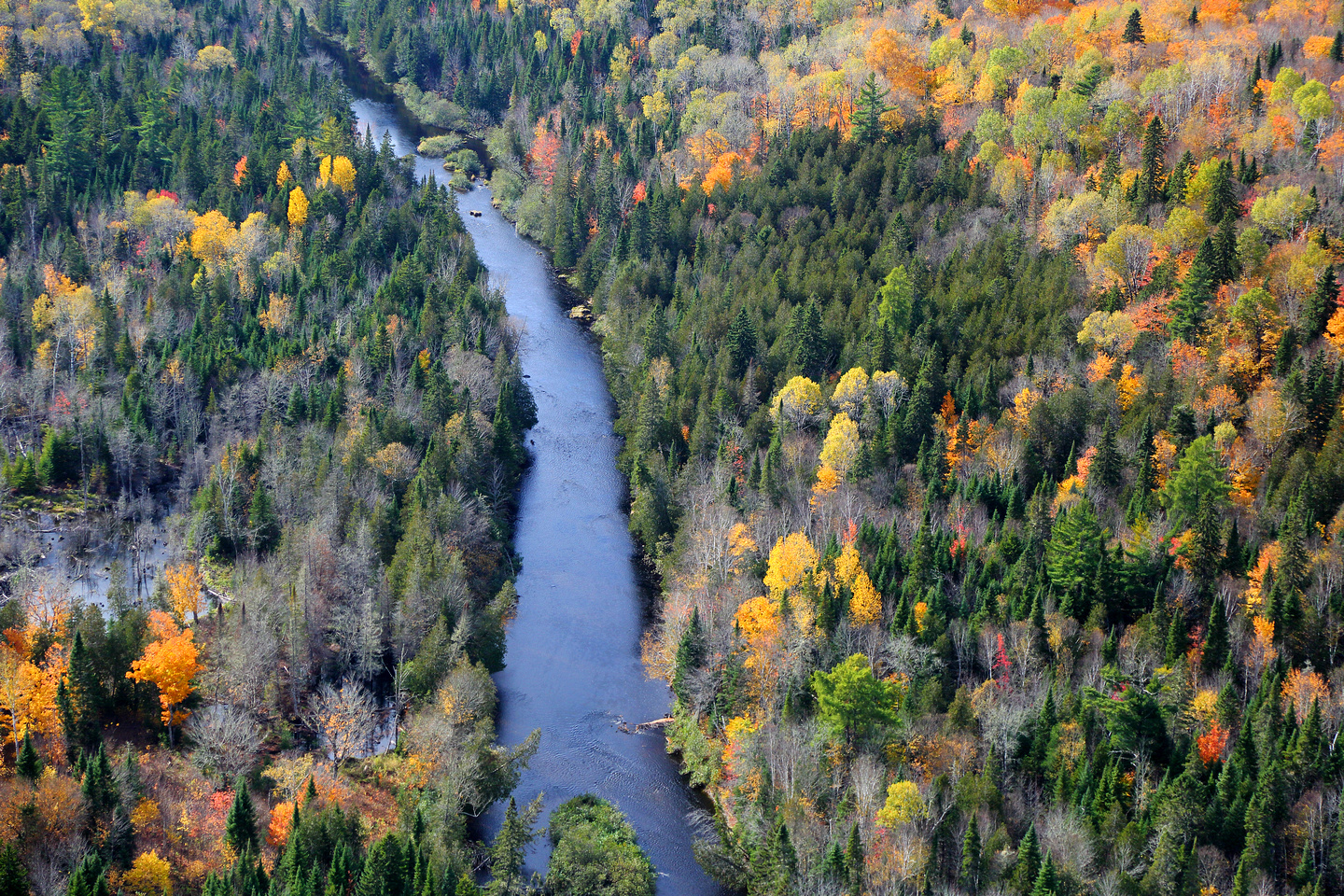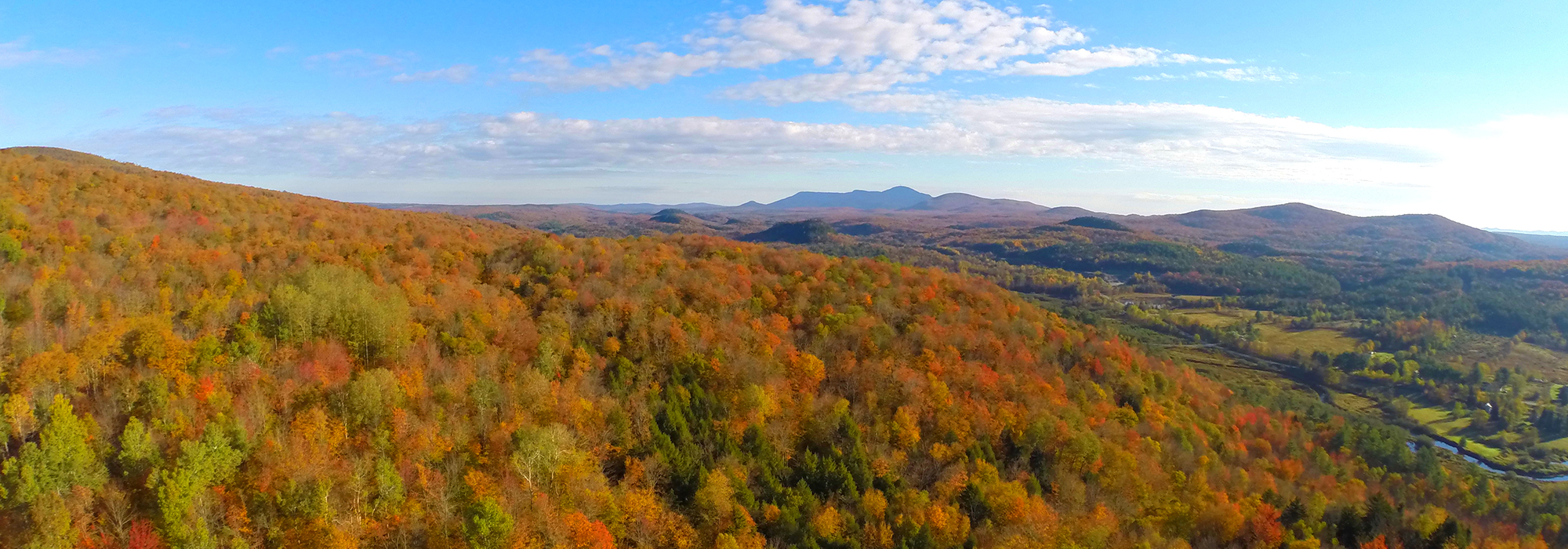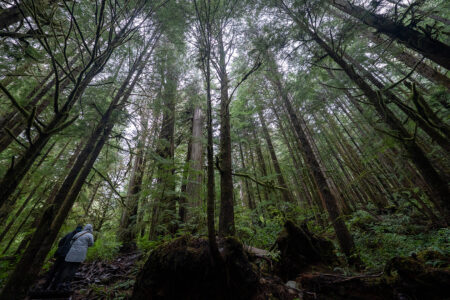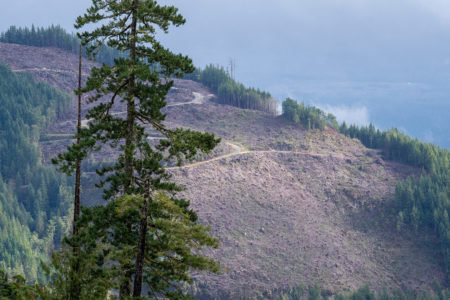
Forests define our Canadian geography and identity. One-third of our country is covered with trees and forests are in every province and territory. Jobs in forestry employ more than 200,000 Canadians and support many Indigenous and northern communities. Our forests attract international tourists and are the reason why I’ve had days in the backcountry when I’ve encountered more Germans in the Yukon, or Japanese in Algonquin Park, than Canadians.
It’s easy to think that our forests are endless, a mindset we’ve held for a long time. But we need to change our thinking. Although there are vast areas of forest in our northlands, they represent some of our planet’s last stands of large intact forests. In southern Canada, we have lost and degraded many of our forests, which has had a negative impact on both nature and people. If some Canadian regions were separate nations, such as the farmlands of southwestern Ontario, they would rank with developing countries like Haiti and Madagascar for their loss of forest cover.
Forests in southern Canada have been heavily affected by land-use change, fragmentation and invasive species. In some regions of southern Ontario, forests have been reduced to less than 7 percent of the landscape and are continuing to decline. Invasive insects and diseases have taken a heavy toll on many tree species, including white ash, American chestnut and white elm.
The Acadian forest region of Atlantic Canada, while it still has abundant tree cover, now has a lower percentage of the landscape with old-growth forest than Europe. And in western Canada, many forests continue to support a diversity of large mammals, but those outside of the network of protected areas are impacted by land-use pressures. The annual rate of deforestation from agriculture in the boreal transition zone in Saskatchewan between 1966 and 1994 was approximately three times the world average. Our southern forests are clearly in crisis.
Canada’s northern boreal forests are unfamiliar to most Canadians. In these hinterlands, we find the more intact forests than anywhere else on the planet. These forests are also the largest storehouse of terrestrial carbon in the world, holding nearly twice as much carbon per square kilometre as tropical forests. Canada’s northern forests provide nesting habitat for an abundance of diverse migratory birds that winter in the United States, Central America and beyond. It’s estimated that the annual fall migration from the boreal forest alone includes 3 to 5 billion birds.
There are opportunities for Canada and Canadians to do more to become world leaders in forest conservation. In the North, we have a unique opportunity to create the world’s largest network of protected forests. Canada may rank third for total forest cover (behind Brazil and Russia), but if there’s any country where intact forests can be maintained, my bet is on Canada.
Increasing the area of protection in the boreal forest from the current 8.3 percent to 17 percent, to help meet our international commitments for the Convention on Biological Diversity, would result in the protection of more than 890,000 square kilometres. Through additional protected areas and Indigenous- and community-conserved areas, much larger regions of our northern forests could be protected — and indeed need to be protected — to maintain this forest wilderness and the species that live there, such as woodland caribou. If we protected 50 percent of Canada’s boreal forest, the total protected area would be larger than Mexico and Central America combined. Conserving these forests is important for Canada, and for the world.
Canada can also better catalogue high conservation value (HCV) forests and other sites that have been set aside by industry and recognize the importance of these lands in contributing toward meeting Canada’s goals for protected areas. The energy, forestry and mining industries can all be leaders in demonstrating sustainability, responsible resource use and biodiversity conservation.

Unlike forests in the north, the vast majority of southern forests are on private lands, and their protection and restoration require thousands of individual actions. Fortunately, many landowners, farmers, corporations and governments are taking steps to protect these private forests. A partnership between TD Bank and the Nature Conservancy of Canada between 2012 and 2016 helped protect 160 square kilometres of forests in southern Canada. The Government of Canada’s Natural Areas Conservation Program has matched funding from provincial governments and individuals to protect more than 4,300 square kilometres in southern Canada, including many forests. The Natural Areas Conservation Program is having a positive impact and it must continue.
Finding conservation solutions for our southern forests is vital for nature and people. These forests provide habitat for many species and services to our communities. From recharging the groundwater that we drink, to holding floodwaters during storms, to providing places for recreation, this natural capital is important to maintaining our quality of life.
There’s no doubt we have made important progress, but is there is still urgency for forest conservation in Canada. Many nations have recognized the need for accelerated forest restoration and have committed to the Bonn Challenge to restore 350 million hectares of degraded lands back to forest. Canada has a great opportunity to join this effort. The strategic restoration of forests in southern Canada could ensure that our protected areas are connected with wildlife corridors, that the health of our streams and rivers is improved by forest buffers and that important habitats for wildlife are maintained.
We all have a role to play in conserving and restoring our forests. Governments can ensure that all forest types are adequately represented in protected areas. While Canada has protected 10.5 percent of our lands and inland waters, only 6.9 percent of our forests are protected. To their credit, the federal government, and provinces like Prince Edward Island and Nova Scotia, have established clear targets to increase the amount of protected areas, and we need to ensure that forests are included.
In southern Canada, where we have lost and degraded many of our forests, we have the opportunity to conserve, restore and connect our forests. Some municipalities have initiated natural-heritage plans that envision a system of forests and support tree cover through bylaws and incentive programs. Every private landowner in Canada can participate in forest conservation through the simple act of planting a tree.
We have a unique conservation challenge in Canada. Can we protect our northern forests, which represent some of the last large, wild forests on the planet, and also conserve and restore the degraded, threatened forests of southern Canada, where most of us live? We have the opportunity to do both. What would be more Canadian than committing to conserve more forests than any other nation?
Photo: Mount Foster located in Quebec’s Eastern Townships. Photo Mike Dembeck
Do you have something to say about the article you just read? Be part of the Policy Options discussion, and send in your own submission. Here is a link on how to do it. | Souhaitez-vous réagir à cet article ? Joignez-vous aux débats d’Options politiques et soumettez-nous votre texte en suivant ces directives.









